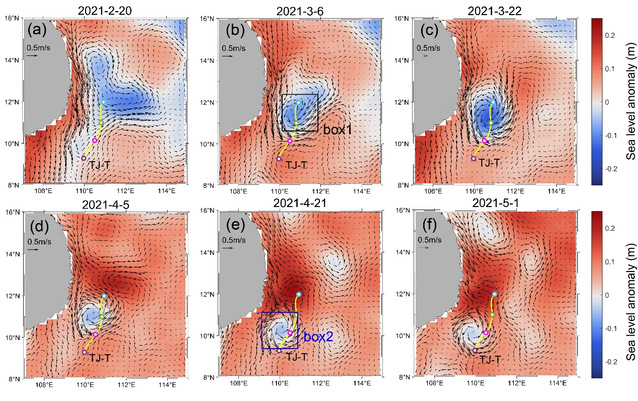Wenzhuo Wanga, Zhifei Liua, Yulong Zhaoa, Baozhi Lina, Xiaodong Zhanga, Jingwen Zhanga, Jiaying Lia, Junyuan Caoa, Hongzhe Songa
aState Key Laboratory of Marine Geology, Tongji University, Shanghai 200092, China
Abstract: Topographic Rossby waves (TRWs) dominate the low-frequency variability of deep ocean currents and play a crucial role in energy exchange and material mixing. On the continental slope of the southwestern South China Sea, a deep-water mooring was deployed to observe TRWs for a period of ~ 40 days. The TRWs, with a wavelength of 109 km, account for 41.3% of the subinertial variations. A ray-tracing model was applied to investigate the propagation and energy source. The results showed that the TRWs propagated from the northeast of the mooring location and were most likely caused by the mesoscale eddy disturbances off the Vietnam coast. This study provides a new perspective on examining the impact of mesoscale eddies off Vietnam on abyssal currents.
Full Article: https://www.nature.com/articles/s41598-024-62040-z.pdf



